A greenhouse is a useful structure that can provide a stable growing environment for your plants and crops throughout the year. In addition, a greenhouse is a system for climate change and management that allows plants to grow in climates and seasons that would otherwise not be suitable for their growth.
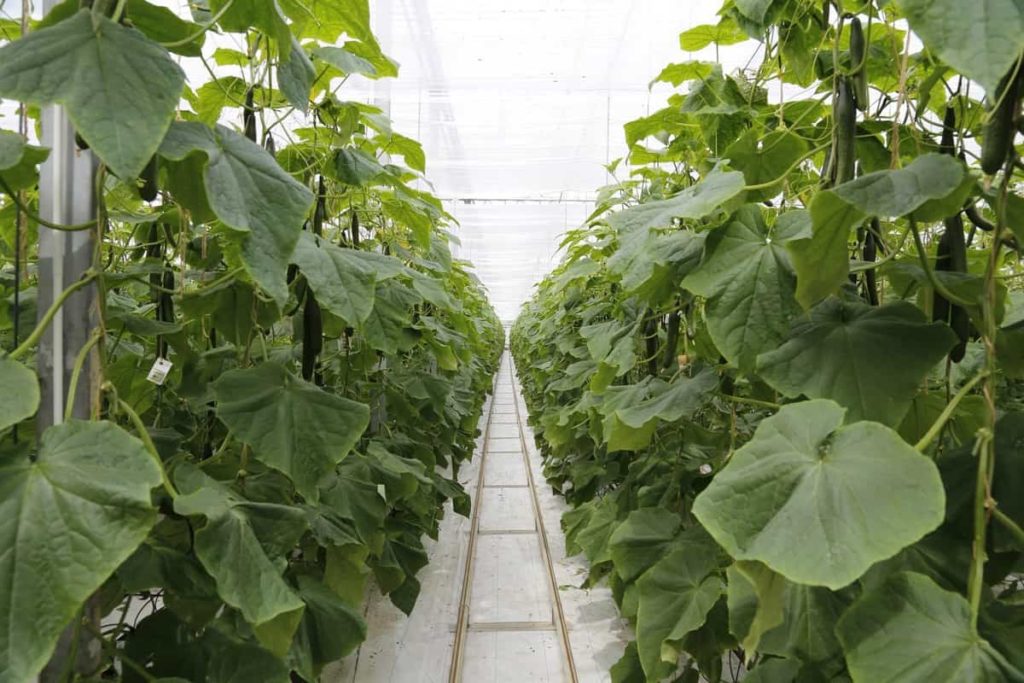
Greenhouses can be used to grow many plants with a wide range of environmental requirements, from gentle rainforest plants to desert succulents and everything in between. This course aims to familiarize you with the various systems and day-to-day management of a greenhouse environment. And to help you maintain more or less optimal conditions for the growth of whatever plant or plants you choose to grow in your greenhouse.
16 key rules for effective Greenhouse farm management
1. Key rules for greenhouse farming
Greenhouse farming is the unique practice of growing crops inside shelters covered with transparent or partially transparent materials. The main purpose of greenhouses is to provide favorable conditions and protect crops from adverse weather and various pests. Greenhouse farming is an agricultural practice in which crops are grown in sheltered structures covered with transparent materials such as glasshouses, shed houses, screen houses, and crop top structures.
Some types of greenhouse farming (including heated grow rooms) can extend the growing season or even allow farmers to grow crops outside their normal growing season. Additionally, equipped greenhouses allow farmers full control over their crop production, allowing for faster growth and higher yields. A greenhouse stabilizes the growing environment by buffering the ambient temperature and protecting plants from extreme cold. It enables the greenhouse gardener to sow earlier and reap the benefits of a growing season with earlier flowers and crops.
2. Effective steps to build a greenhouse to increase production
There are many ways to build a greenhouse to fit your available growing space and budget. Follow these steps to build a greenhouse for your garden and reap the benefits of a year-round growing season.
1. Find a greenhouse plan – There are tons of free plans available to help you build a variety of greenhouses, from mini greenhouses to barn greenhouses to A-frames. Make sure you have a working plan showing you how to build your chosen greenhouse style.
2. Choose a location – Choose a location for your greenhouse that receives maximum sunlight. Make sure the long sides of your structure face east and west so your structure can absorb as much sunlight as possible. Avoid clumps of evergreen trees or other structures that may cast shadows on the structure. Choose a level location that will allow for proper drainage.
3. Measure your space – Use a tape measure to see how much ground space you need for your greenhouse. Ideally, you’ll have done this before choosing a greenhouse plan, but it’s always helpful to double-check to see if you have enough space to execute your design.
4. Get permission – Check with your local municipality to see if you need a building permit or permission to add a greenhouse structure to your yard. Make sure your construction is up to code and follows local ordinances if necessary.
In case you missed it: How to Water Your Garden with Solar Power: For Home Gardening, Greenhouse, Polyhouse, and Outdoor
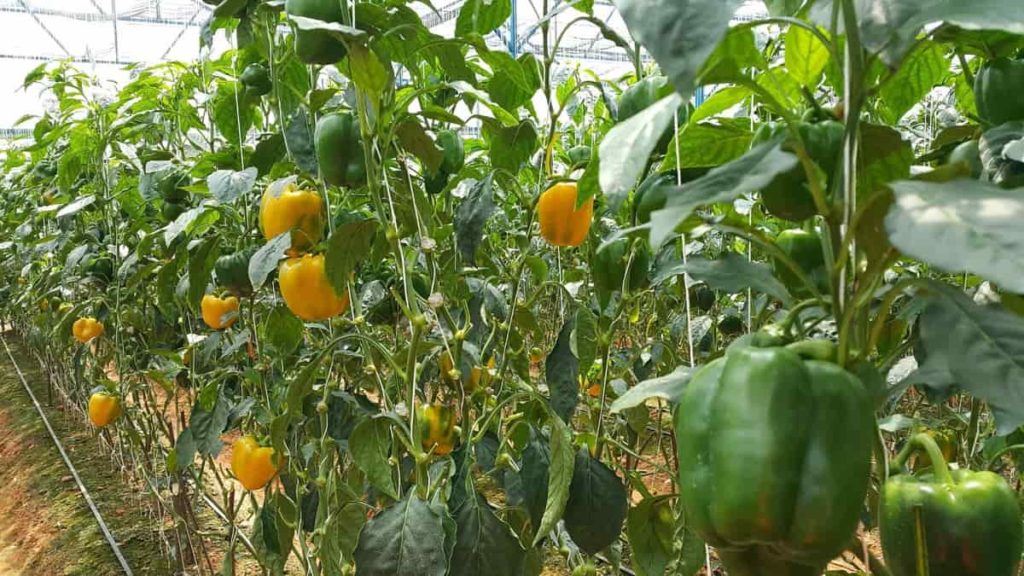
5. Determine your base – If the site you’re building your greenhouse on is uneven, you’ll need a foundation to stabilize your structure and provide adequate drainage properly. For cold climate gardening, place the foundation below the frost line. If you choose not to dig a foundation, you can create a well-draining floor with gravel or landscape fabric.
6. Add ventilation – Your greenhouse should be an environment that mimics the natural growing environment of your plants, with enough air circulation and ventilation to prevent overheating mold or mildew growth inside your greenhouse. Install roof vents or circulation systems to keep your greenhouse adequately ventilated.
3. Environmental factors are ideally controlled in a greenhouse
Five factors of greenhouse environmental control;
- Temperature – Temperature is one of the most important factors responsible for plant growth.
- Moisture – Moisture is another important factor essential to maintaining plant growth.
- Sunlight
- Soil moisture
- Carbon dioxide (CO2)
Greenhouses are inflatable structural frames covered with a transparent material in which crops are grown under controlled atmospheric conditions. Greenhouse cultivation and other controlled environment cultivation methods have been developed to create a favorable microclimate, enabling crop production as needed throughout or during the year.
4. Key rules for successful organic greenhouse
- Growing organically means growing plants without the use of chemical fertilizers or chemical pesticides. Starting organic gardening is as easy as buying certified organic seeds and planting or making your organic soil from raw ingredients. Many organic fertilizers, pesticides, and herbicides are available, making converting to organic very easy and convenient.
- Greenhouse growers prefer container benches, while others prefer raised beds. Since you can grow organic produce successfully in either container or raised beds, the decision comes down to the personal preference of the gardener or the crops themselves.
- Growing greenhouse plants organically is a fun and healthy hobby. Few things are as rewarding as growing your own fresh, organic herbs and vegetables. In addition, organic greenhouse farming is an ongoing educational hobby that keeps horticulturists alive and refreshed yearly.
5. Production tips for organic greenhouse production
- Running a small farm in your backyard differs from running a large organic farm. You need to understand the additional inputs required to farm organically.
- Contacting the established organic farm manager is a good way to start a greenhouse farm. First, tell them about your intention to begin your organic farm and greenhouse business. Then, ask important questions about the greenhouse business, starting with questions about getting started and then asking questions about how to manage the business successfully.
- Determine the crops to be grown – Chances are you don’t have enough land to grow a wide range of crops. However, even if you do this, you must specify the crops you will grow on a greenhouse farm. These can be flowers, vegetables, food crops, herbs, or other plants.
- Start with organic soil – Don’t try to save money and jeopardize the quality of the soil or organic materials you add to your soil, including compost, seaweed, or compost. These additives act like fertilizers. They can increase soil health and help create a better growing environment for your plants. But remember, different plants have different needs. Be careful when starting your garden. If you are planting directly in the soil, make sure the soil is free of harmful organisms or toxins. If unsure, you can use a soil testing kit from most seed suppliers.
- Composting – Composting is one of the most important and cost-effective ways to fertilize your garden. You must remember to keep compost organic. It means that the materials you add to your compost must be organic. If your compost has chemicals in it, your compost will too.
6. Best position for a greenhouse farm management
Generally, the best location for a greenhouse is in a sunny area on the south or southeast side of the house that receives the most sunlight from fall to winter (November to February in most places). However, if this option is unavailable, the next best location for a greenhouse is on the east side. The next option for a greenhouse is southwest or west. Try to position the greenhouse lengthwise from north to south rather than east to west.
In case you missed it: Growing Broccoli in Greenhouse – Planting, Farming
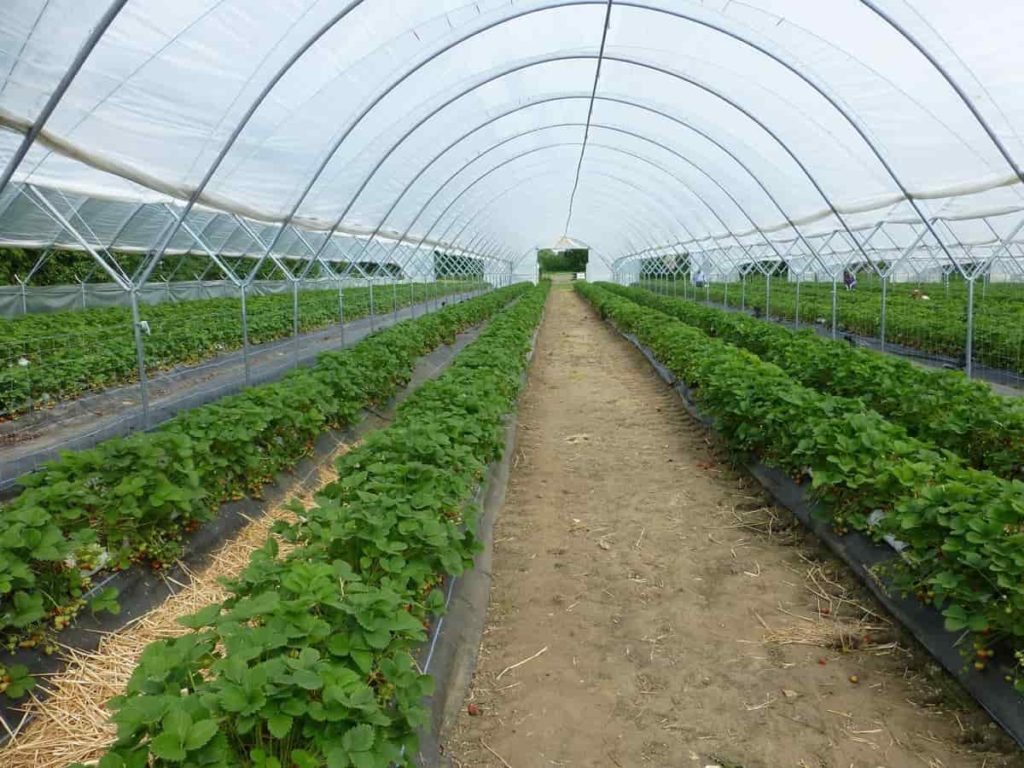
This position provides a structure with more light and less shadow. While unobstructed sunlight is important, afternoon shade can depend on the plants grown and the time of year they are grown. The main component of the greenhouse structure – The main components of a greenhouse are its structural components, such as trusses, purlins, and side posts. Most frames are made of steel, aluminum, plastic, or wood. There are several materials to consider when deciding on the foundation for a greenhouse.
7. Key rules in the selection of different greenhouses
- Low-cost or low-tech greenhouse – A low-cost greenhouse is a basic building made of locally accessible materials such as bamboo and wood. The cladding material is made of ultraviolet (UV) film. Unlike traditional or high-tech greenhouses, there is no special control device to regulate the environmental conditions inside the greenhouse. Even the light intensity can be reduced by shading material such as netting. During summer, the temperature can be reduced by opening the side walls.
- Medium tech greenhouse – Due to minimal investment, greenhouse users prefer manual or semi-automatic control systems. GI (Galvanized Iron) pipes are used to construct this type of greenhouse. With the help of screws, the umbrella cover is attached to the framework. The entire structure is firmly anchored to the ground to withstand wind damage. The exhaust fan controls the temperature. Evaporative cooling pads and misting systems also keep the greenhouse at a comfortable humidity level.
- Hi-tech greenhouse – To overcome some of the challenges of a medium-sized greenhouse, a high-tech greenhouse has been developed with complete equipment, which controls the environmental conditions, to help automate the operation.
8. Key rules for selecting the most profitable greenhouse crops
Lighting, ventilation, humidity, and temperature can all be controlled in greenhouses. It allows the farmer to create and provide the optimal micro-ecosystem for plants, helping them to grow strong, beautiful, nutritious, and tasty. The main sustainable advantage of greenhouse farming is that it can effectively manage and reduce risks related to adverse weather conditions. Also, in practical terms, greenhouse farming improves growing conditions and protects crops from extreme weather events. The most profitable greenhouse crops are;
| Tomatoes | Leeks |
| Lettuce | Baby Carrots |
| Pepper | Broccoli |
| Cucumbers | Pumpkin |
| Spinach | Garlic |
| Herbs | Squash |
| Strawberries | Swiss chard |
| String Beans | Zucchini |
| Chili Peppers | Grapes |
| Microgreens | Lettuce |
| Melons | Raspberries |
| Peas | Mushrooms |
| Sweet Corn |
9. Some effective considerations for greenhouse construction
The most effective factors when building a greenhouse are size, ventilation, and materials.
- Size: The greenhouse size will depend on the available space, so grow as large as possible. It would help if you looked at a width of at least 8 feet and a height of at least 6 feet. The length is variable. If your width is at least 8 feet, you can install shelves on both sides of the greenhouse. It will increase your harvest tremendously.
- Ventilation: Greenhouse farm needs to be adequately ventilated, especially during the summer heat. Most gardeners agree that the optimal ventilation setup will have one on the side and two on the roof, but this may vary depending on your climate.
- Materials: Greenhouses can be made from various materials, each with advantages and disadvantages. Polycarbonate is relatively strong but doesn’t let in as much light as other options. Aluminum is low maintenance than wood, but it doesn’t insulate so that heat can be lost through the frame. Wooden greenhouses are attractive and great at maintaining a stable temperature. Still, they may require regular maintenance, which can be expensive. Glass is often used, especially for small home greenhouses, but can break and is expensive to replace. Then there are greenhouses with clear plastic tarping stretched over metal hoops. They are cheap and easy to set up but can tear easily.
In case you missed it: Greenhouse Ginger Farming – A Full Planting Guide
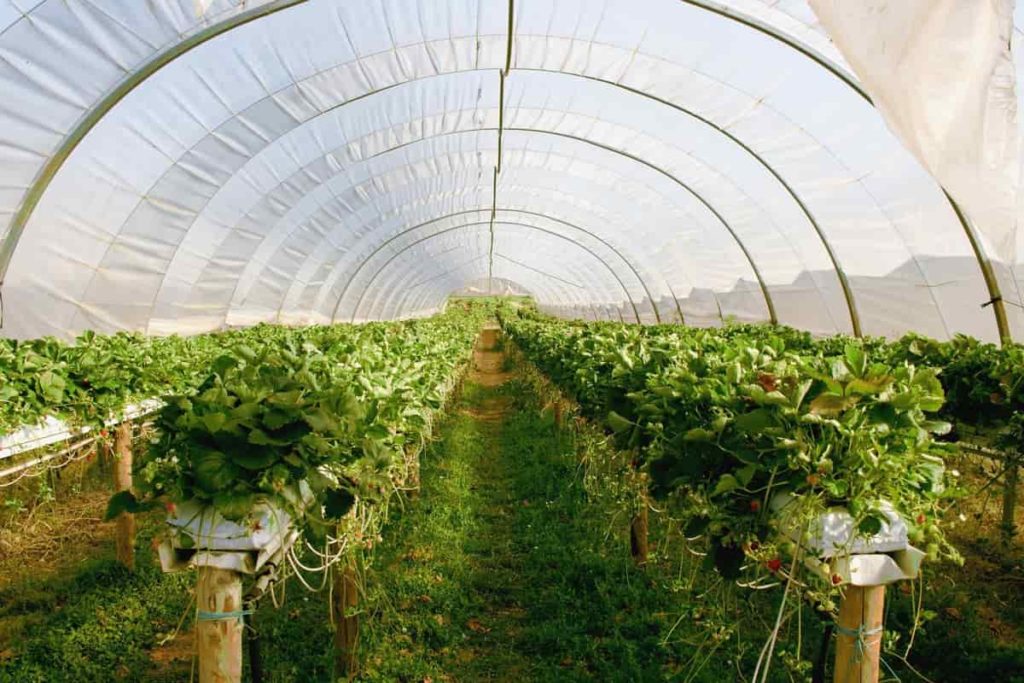
10. Key rules for the best way to water greenhouse crops
- The best time to water a greenhouse, as with garden plants, is in the morning. It will give the plants time to dry. You can also water late in the evening to reduce evaporation, which may mean your plants aren’t completely dry before the sun goes down.
- Drip systems are better because they are adaptable to any size and are suitable for all purposes. It is a hose with multiple ends (emitters) that regularly releases water throughout the day. A drip irrigation system can be installed on the surface or buried within the soil.
- Best way to water plants in a greenhouse – The capillary mat is an easy way to use the image result. You place them under your pots and flats and slowly drip water, which the pots’ drip holes carry to the plant’s roots. It is called sub-irrigation, reducing evaporation and preventing overwatering, promoting rot and fungal disease.
- Professional greenhouse watering tips – Even if you have the most rudimentary irrigation system, get some greenhouse watering tips from the experts for a more efficient setup. Group plants that need water together. Apply 10 to 15 percent more water than a container and use a collection mat for extra flow. Don’t use overhead watering unless you have a greenhouse full of single crops. It is useless and not useful for various plants with different water needs. Install a collection tank for recycled water. Use a drip system connected to a rain barrel or natural pond to minimize your water bill. The greenhouse watering system may take some time to return to normal. Once you know the needs of each type of plant and can handle excess moisture conservatively, the duration and frequency of irrigation can be determined and adjusted using a timer or other simple monitoring device.
11. Effective growing media for greenhouse production
- The most common media used in greenhouse farming is a mixture of peat, vermiculite, and perlite. The media is designed to achieve a high level and water retention while providing adequate aeration. A nutrient is added, and the pH level is adjusted to about 6.0.
- Most commercial greenhouse media for container crop production contain 30 to 60 percent peat moss alone or combined with composted pine bark.
- Types of Growing Media: Describe the major components of soil and other growing media, and identify basic physical and chemical properties, including texture, structure, alkalinity, water-holding capacity, and drainage.
- Plant nutrients and formulations: Identify the effects of soil and non-soil compounds (pH, organic matter, and mineral content) on plant health and growth. Perform basic soil testing techniques to formulate corrective actions as needed.
- Growing media production: Explain the principles of media production. Create a checklist to guide media preparation. Explain the purpose, methods, and importance of media sterilization. Compare and contrast the cost-effectiveness of premix and personal mix media with soil mix.
12. Management tips to maximize your greenhouse profitability
Eliminate inefficient time and labor management – In the past, farmers had to track labor activities manually or use time clocks and spreadsheets. This approach may yield the desired result, but it shouldn’t be that difficult. Workers should have the ability to track labor in real-time. The time per activity must be instantly updated in an automated system, showing the task and timestamps for each task within the production.
Up-to-date information, advanced insights into your greenhouse operations, and time and resource management mean you can react quickly to an ever-changing market when labor-intensive activities are eating into profits and productivity. A smart greenhouse uses advanced automation technology to control the most important factors affecting crop production, such as temperature, ventilation, light exposure, humidity, nutrient dosage, etc.
Greenhouse operators can overcome challenges and maximize profitability with new platform solutions that integrate hardware and software assets. Advanced systems integrate wireless monitoring and management into an app-enabled environment, giving growers remote access to their operations. Use an efficient and affordable greenhouse heating system – For now, the most straightforward and most efficient heating system is still a natural gas or propane unit heater.
You may want to install a diffusion tank and squirrel cage to distribute the heat throughout the greenhouse. Buying a new or newer furnace with increased efficiency (using less gas to provide more heat) is worth the investment. Then, take the time to maintain your system to ensure it will always perform well.
Crop scheduling and planning – Try to use your greenhouse at nearly full capacity. Think about your climate, and start growing plants that can tolerate cold temperatures early. Plan the plants you want to grow. Then schedule everything from planting to harvesting so you can use the greenhouse space to its full potential. Some plants take less time to be ready for harvest, for example, Spinach and Radishes. Once you harvest them, you can use that space to grow something else; it’s up to you.
13. Key rules for vertical gardening help maximize space in a greenhouse
- Vertical gardening helps make the most of small spaces. Use hooks, spirals, top shelves, or hanging pots from the ceiling or sidewall. You can use it for growing, drying herbs, or storing gardening tools. Clip together gardening gloves or seed packets and hang them on a hook on the walls. Hanging pots add an interesting design to your greenhouse if placed in elevated areas. Having more shelves on the side walls greatly increases vertical growth space. It looks pretty, and you can hang gardening tools on the hooks.
- Choosing the right width greenhouse – There are several strategies for building a greenhouse park with a greenhouse or multiple greenhouses. It can be tempting to go for smaller greenhouses that seem less expensive. However, you would be making a big mistake in choosing this strategy. One of the five investments to consider to improve your greenhouse production is choosing a wider and taller greenhouse—the wider and taller the greenhouse, the lower the infrastructure cost per square meter. Also, a good-sized greenhouse will allow maximum use of outside light, and your yield will be higher. In addition, the larger the greenhouse, the more efficient the mass heating system will be, so you will have to spend less on heating costs per square meter.
- Know your climate to maximize your greenhouse – If you’ve moved to a new climate and started a garden, it may take time to figure out what to plant when you’re done in your new climate. You must also factor in things like daylight hours and sun and shade paths. But once you understand these things, you can create a year-round planting calendar to best use your space.
In case you missed it: Organic Vegetable Farming In Greenhouse – Growing
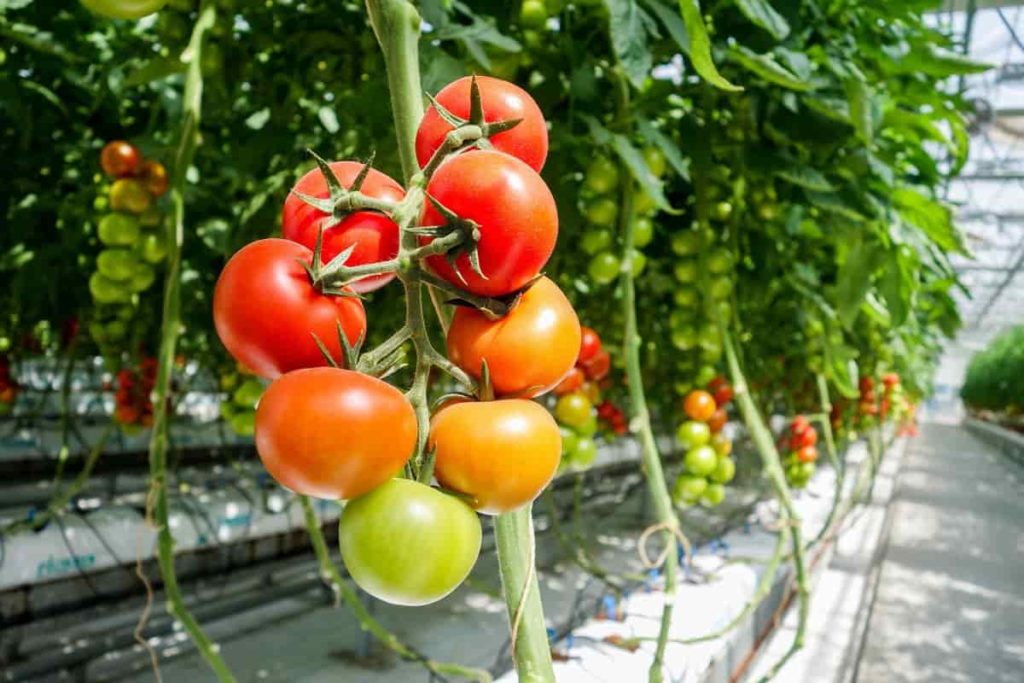
14. Tips for controlling greenhouse pests for more production
Some common and important greenhouse pests to watch out for are aphids, fungus gnats, thrips, whiteflies, caterpillars, leafminers, mealybugs, mites, slugs, and snails. The weed control is to eliminate all possible sources of pest contamination in and around the greenhouse. Herbs near the inside and outside of the greenhouse can harbor insects. A weed-free fabric ground cover or a concrete floor under greenhouse benches can also help prevent problems.
If you’ve been monitoring tiny insects with sticky cards, you’ll quickly know when something isn’t right in your greenhouse. Sticky cards placed on and near susceptible plants should be changed weekly during the busy summer pest season. A surprising number of greenhouse pests can be killed with insecticidal soap, including aphids, mealybugs, mites, whiteflies, and thrips.
Spray affected plants liberally with insecticidal soap, making sure to spray the undersides of the leaves and the stem thoroughly. Scale insects require strong control methods but can usually be controlled with neem oil. As with insecticidal soap, apply neem weekly until all scale is dead. You can use a thin-bladed knife or your fingernail to lift the protective coating to spot the dead scale.
Tiny flies are easily transported to the soil of infected plants by application of Bacillus thuringiensis. The adults will not disappear immediately, but these treatments kill the harmful larvae. Caterpillars and slugs are usually picked by hand and thrown into a bucket of soapy water. Check plants and under benches and any debris where they may be hiding. Caterpillars and slugs can cause serious damage.
15. Factors for greenhouse production cost
- Low-cost greenhouse without fan and pad of Rs. 300 to 500/m2
- Medium cost greenhouse with pad and fan system without automation cost between Rs.800 and Rs.1100 per m2
- Expensive greenhouses with fully automatic control systems costing Rs. 2000 to Rs. 3500 per m2.
16. Key rules in apply loans for greenhouse farming
Through its Department of Horticulture, the government of India is trying to promote greenhouse farming across the country by introducing Greenhouse Farming Subsidy. About 50 to 60 percent subsidy is provided on the cost of the entire greenhouse project. The amount and percentage of subsidy provided may vary from individual state to state.The government provides subsidies and financial assistance for setting up greenhouse farms. The subsidies are either soft loans or back-ended subsidies on the project’s total cost.
Apply for a bank loan – The initial investment in greenhouse farming is high. To begin with, greenhouse farming costs around 40-60 lakhs (greenhouse cost per acre). Many banks are interested in providing horticulture loans to farmers. To get a loan for a greenhouse, you need to prepare a Greenhouse Farming Project Report and submit it to the bank. Also, this project report helps apply subsidies for greenhouses.
In case you missed it: Growing Peas in Greenhouse – A Full Planting Guide
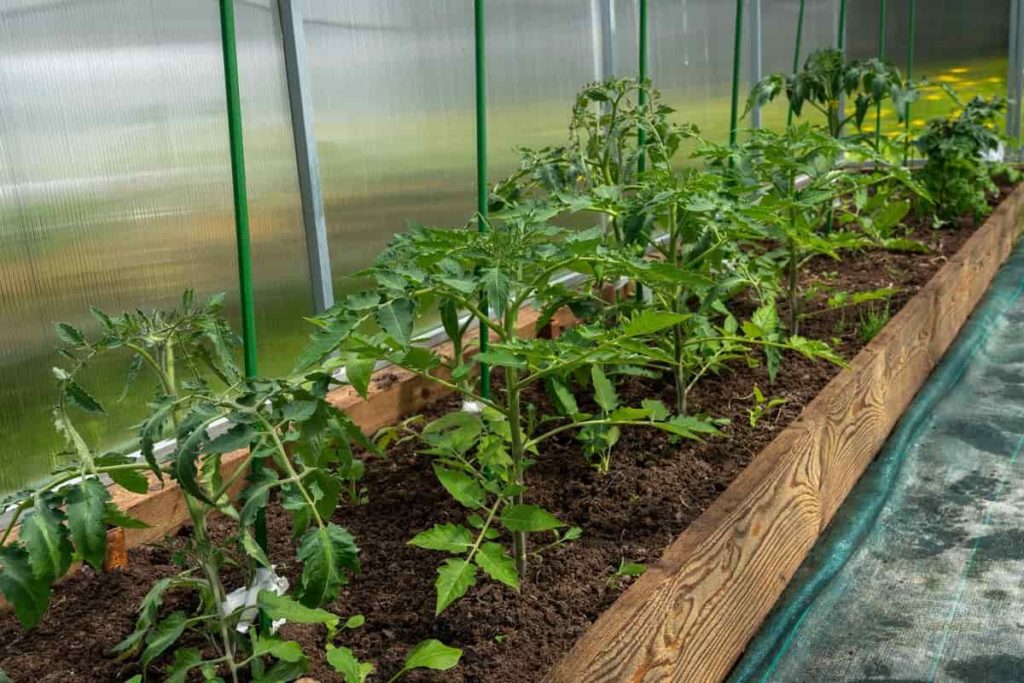
Conclusion
Greenhouse farming is the process of growing crops and vegetables in a greenhouse. Doing so typically increases farmers’ efficiency and productivity while improving product quality. Greenhouse farming protects crops from external threats such as certain pests and extreme weather events.
Greenhouse agriculture is also a way to grow fruits and vegetables rather than their cold counterparts in hot climates. The greenhouse farming business has a high potential to grow and succeed as the demand for sustainable organically grown farm products has increased significantly. These are the helpful tips to get you on your way to greenhouse farming success.
- Types of Pesticides Used in Agriculture: A Beginner’s Guide
- Economical Aquaculture: A Guide to Low-Budget Fish Farming
- 15 Common Planting Errors That Can Doom Your Fruit Trees
- How to Make Houseplants Bushy: Effective Tips and Ideas
- Innovative Strategies for Boosting Coconut Pollination and Yield
- Pollination Strategies for Maximum Pumpkin Yield
- The Complete Guide to Chicken Fattening: Strategies for Maximum Growth
- Natural Solutions for Tulip Problems: 100% Effective Remedies for Leaf and Bulb-Related Issues
- Revolutionizing Citrus Preservation: Towards a Healthier, Greener Future
- Natural Solutions for Peony Leaf and Flower Problems: 100% Effective Remedies
- Maximizing Profits with Avocado Contract Farming in India: A Comprehensive Guide
- Natural Solutions for Hydrangea Problems: 100% Effective Remedies for Leaf and Flowers
- The Ultimate Guide to Choosing the Perfect Foliage Friend: Bringing Life Indoors
- From Sunlight to Sustainability: 15 Ways to Use Solar Technology in Agriculture
- The Ultimate Guide to Dong Tao Chicken: Exploring from History to Raising
- The Eco-Friendly Makeover: How to Convert Your Unused Swimming Pool into a Fish Pond
- Mastering the Art of Delaware Chicken Farming: Essentials for Healthy Backyard Flocks
- 20 Best Homemade Fertilizers for Money Plant: DIY Recipes and Application Methods
- How to Craft a Comprehensive Free-Range Chicken Farming Business Plan
- Brighten Your Flock: Raising Easter Egger Chickens for Beauty and Bounty
- How to Optimize Your Poultry Egg Farm Business Plan with These Strategies
- Subsidy for Spirulina Cultivation: How Indian Government Schemes Encouraging Spirulina Farmers
- Ultimate Guide to Raising Dominique Chickens: Breeding, Feeding, Egg-Production, and Care
- Mastering the Art of Raising Jersey Giant Chickens: Care, Feeding, and More
- Ultimate Guide to Raising Legbar Chickens: Breeding, Farming Practices, Diet, Egg-Production
- How to Raise Welsummer Chickens: A Comprehensive Guide for Beginners
- How to Protect Indoor Plants in Winter: A Comprehensive Guide
- Ultimate Guide to Grow Bag Gardening: Tips, Tricks, and Planting Ideas for Urban Gardeners
- Guide to Lotus Cultivation: How to Propagate, Plant, Grow, Care, Cost, and Profit
- Agriculture Drone Subsidy Scheme: Government Kisan Subsidy, License, and How to Apply Online
- Ultimate Guide to Raising Araucana Chickens: Breed Profile, Farming Economics, Diet, and Care
- Bringing Hydroponics to Classroom: Importance, Benefits of Learning for School Students
- Ultimate Guide to Raising Polish Chickens: Breed Profile, Farming Economics, Diet, and Care
- Ultimate Guide to Raising Australorp Chickens: Profile, Farming Economics, Egg Production, Diet, and Care
- Silkie Chicken Farming: Raising Practices, Varieties, Egg Production, Diet, and Care
- Sussex Chicken Farming: Raising Practices, Varieties, Egg Production, Diet and Care